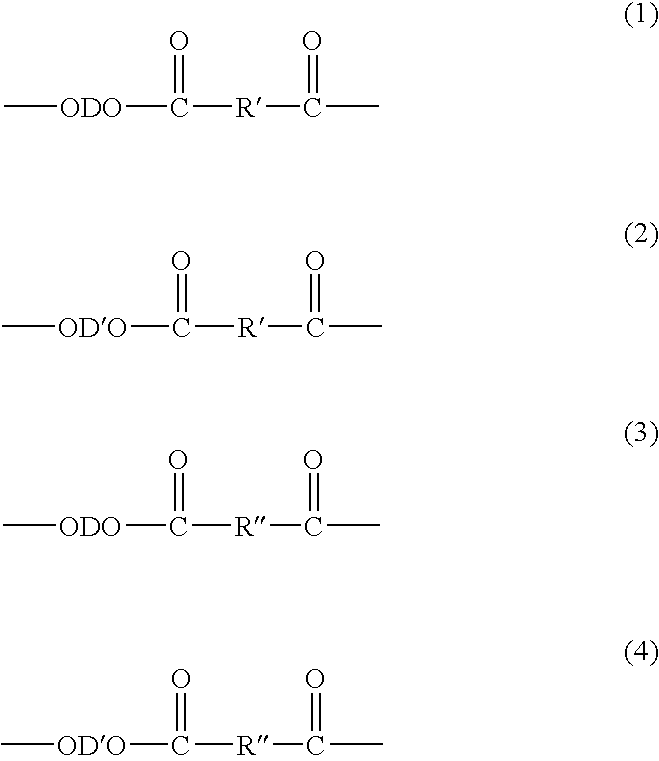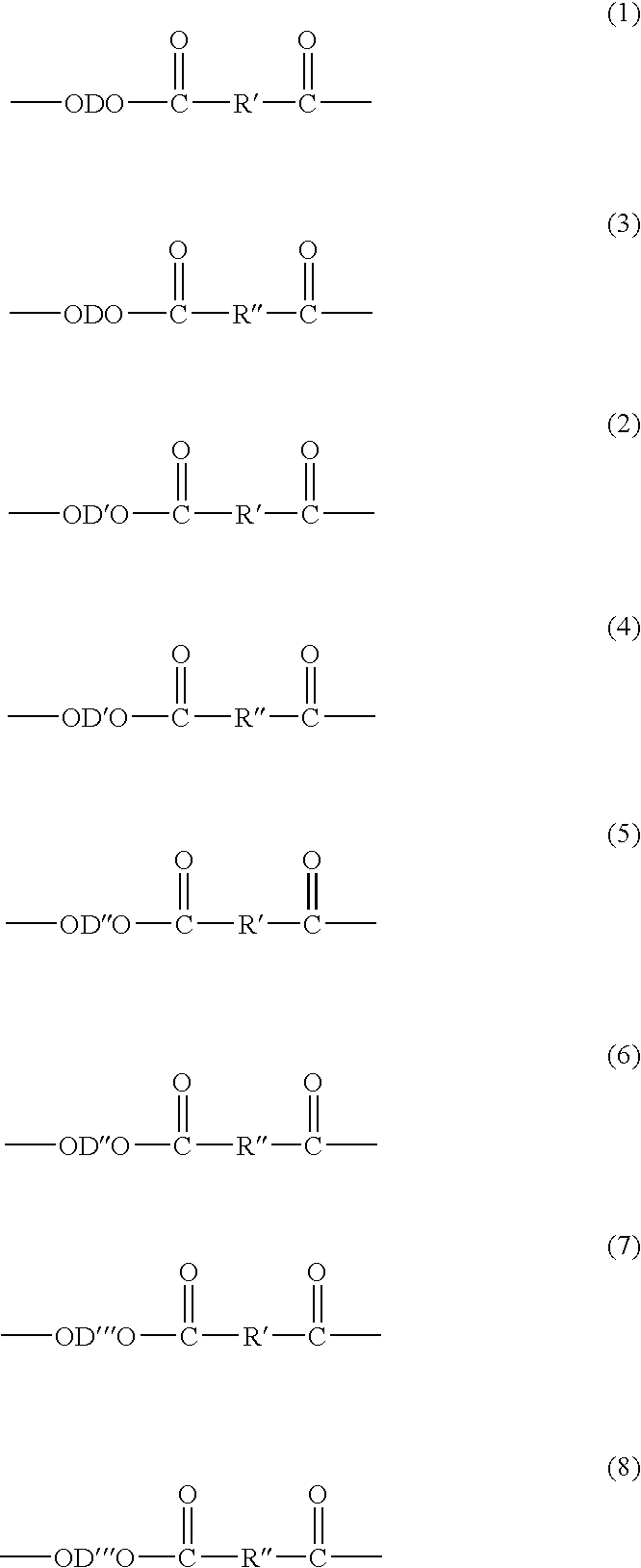Process for the manufacture of polycyclohexane dimethylene terephthalate copolymers from polyethylene terephthalate, and compositions and articles thereof
a technology of polycyclohexane terephthalate and polyethylene terephthalate, which is applied in the field of polycyclohexane dimethylene terephthalate copolymer manufacturing of polycyclohexane dimethylene terephthalate, and compositions and articles thereof, which can solve the problem that conventional pct molding compositions generally are not made from recycled sources of p
- Summary
- Abstract
- Description
- Claims
- Application Information
AI Technical Summary
Benefits of technology
Problems solved by technology
Method used
Image
Examples
examples
Materials.
[0062]Table 1 lists the components used in the examples.
TABLE 1AbbreviationDescriptionSupplierPET-rRecycled poly(1,4-ethylene terephthalate)Futura-pelletsPolyestersTPTTitanium tetraisopropoxideDupontCHDM1,4-cyclohexanedimethanolEastman
Synthesis of Modified PCT From Recycled PET. Pilot Plant Process.
[0063]A modified polycyclohexanedimethylene terephthalate copolymer was derived from a polyethylene terephthalate component at larger scale in a helicone reactor. The helicone reactor had a capacity of 40 liters and was equipped with a special design of twin opposing helical blades with 270 degree twist; constructed of 316 SS (stainless steel) with 16 g polish finish. The blade speed could be varied from 1 to 65 rpm. The agitators were connected to a 7.5 HP Constant Torque Inverter Duty Motor, which operates at 230 / 460 VAC, 3 PH, and 60 Hz. These agitators provided excellent surface area for the polymer melt in order to build molecular weight. The helicone was also designed with...
PUM
| Property | Measurement | Unit |
|---|---|---|
| pressure | aaaaa | aaaaa |
| temperature | aaaaa | aaaaa |
| temperature | aaaaa | aaaaa |
Abstract
Description
Claims
Application Information
 Login to View More
Login to View More - R&D
- Intellectual Property
- Life Sciences
- Materials
- Tech Scout
- Unparalleled Data Quality
- Higher Quality Content
- 60% Fewer Hallucinations
Browse by: Latest US Patents, China's latest patents, Technical Efficacy Thesaurus, Application Domain, Technology Topic, Popular Technical Reports.
© 2025 PatSnap. All rights reserved.Legal|Privacy policy|Modern Slavery Act Transparency Statement|Sitemap|About US| Contact US: help@patsnap.com


